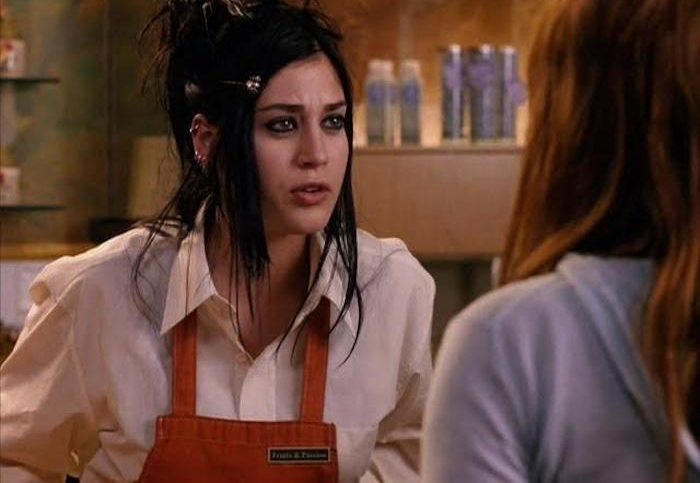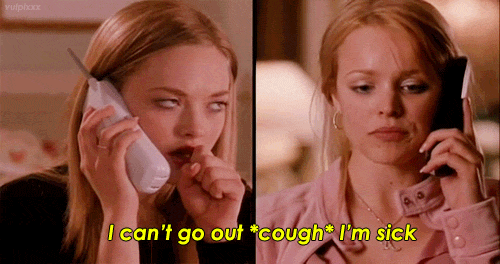
If you’re a casual employee, you could now be entitled to paid sick and annual leave like your full-time colleagues, thanks to a Federal Court decision made on Thursday.
A unanimous decision in court ruled that casual employees who work regular, ongoing shifts should be entitled to the same rights as full and part-time employees, such as sick and annual leave. Frankly, this is a huge win for anyone who works in retail or hospitality, where permanent part-time or full time positions are scarce.
Basically, the new ruling looks to solve an issue that most of us have faced at some point in our working lives: you work the same (or similar) shifts every week at your local pub, cafe or clothing store, but because you’re “casual”, you miss out on the benefits like annual leave and sick leave.
But, as you’d expect, the whole situation is a bit of a shit show, which makes it really confusing to know what you’re actually entitled to. So sit down, grab a snack and let’s unpack this together, shall we?
What Is A Casual Worker?
According to Australian Unions, more than 2 million Australians are employed on a casual basis, which is *checks notes* a lot.
Unfortunately, casual work as a whole is a bit of a grey area because there’s no real definition as to what constitutes casual work. Currently, if you’re not full-time, part-time or a contractor, you’re lumped into the general category of “casual”, regardless of how many hours or how frequently you work.
For some people, casual work is a temporary job with irregular, often infrequent hours. But for many of us, especially in hospitality and retail, you could be considered a casual employee even though you work the same (or similar) shifts every week.
Casual employees don’t get sick or annual leave, but are paid casual loading in an attempt to make up for those entitlements.
What Am I Entitled To As A Casual Worker Right Now?
Basically, as it currently stands, casual workers are entitled to an extra penalty rate know as casual loading. The exact amount varies depending on your award or enterprise agreement, but it usually works out to about 15-25% extra.
In theory, this higher hourly rate is meant to make up for the fact that casual workers aren’t entitled to sick leave or annual leave. Your employer gives you an extra 20%-ish when you do work to balance out the fact that they don’t pay you when you need to take time off.
You’re technically protected from unfair dismissal, but with no guaranteed hours or leave entitlements, casual workers are often sacrificing a lot for that extra 15-25% loading.
What Does The New Ruling Mean?
The Federal Court only made the decision on Thursday, which means the specifics haven’t really been set in stone yet (or at least haven’t been made public). We’ll be sure to update you will all of the specifics when new information becomes available, but this is what we know so far.
To put it simply, the court ruled that ongoing, regular casual employees should be entitled to the same benefits as their full and part-time colleagues.
This includes paid (yes, PAID) sick leave, annual leave and compassionate leave, which is a huge win for anyone who’s ever had to work a shift when they’re deathly ill because they simply can’t afford not to.
So… Every Casual Employee Gets Sick Leave Now?
This new legislation is still in its early stages, so nothing is concrete yet, but not really.
The new ruling isn’t going to impact everyone, so unfortunately if you’re only working the odd shift every few weeks, you probably won’t be included. Instead, it is meant to protect those of us who are already mimicking the schedules and duties of our part-time and full-time colleagues, with regular weekly shifts but without the coveted benefits.
If you’re working 40 hours per week behind the bar at your local pub, you’ll probably be entitled to paid leave, but if you’re working the odd shift at your favourite clothing store, don’t get your hopes up.

What Is a “Permanent Casual” Employee?
There’s no specific criteria for what constitutes a regular, “permanent” casual employee at this stage. The government is yet to release a model of how many hours you need to work, or what is considered “regular” employment in the eyes of the law.
However, it looks like those of us working in hospitality, retail or mining, who often work frequent and regular shifts will be covered by the new ruling.
We’ll be sure to update you as soon as the government sheds some light on this.
Am I Entitled To Back-Pay?
Interestingly, the decision could mean that millions of people who are considered “permanent casuals” could be entitled to a hefty back payment of annual leave they didn’t receive.
According to Yahoo Finance, employers are looking at around $8 billion worth of back-pay claims for 1.6-2.2 million casual employees as a result of the landmark ruling.
However, many businesses have hit back at the government for the ruling, with Industrial Relations Minister Christian Porter pointing out that the decision could be appealed.
“There is of course potential for an appeal in the matter and if that were to occur, the government would closely consider the merits of intervening,” Porter said, according to Yahoo Finance. “Given the potential for this decision to further weaken the economy at a time when so many Australians have lost their jobs, it may also be necessary to consider legislative options.”
To put it simply, it’s just too early to say whether or not you’ll be entitled to backpay.

There’s a lot that we still don’t know about this new ruling, but we’ll be sure to update you with more information on how the decision will impact you as it becomes available.



